Top 10 Attractions in Egypt
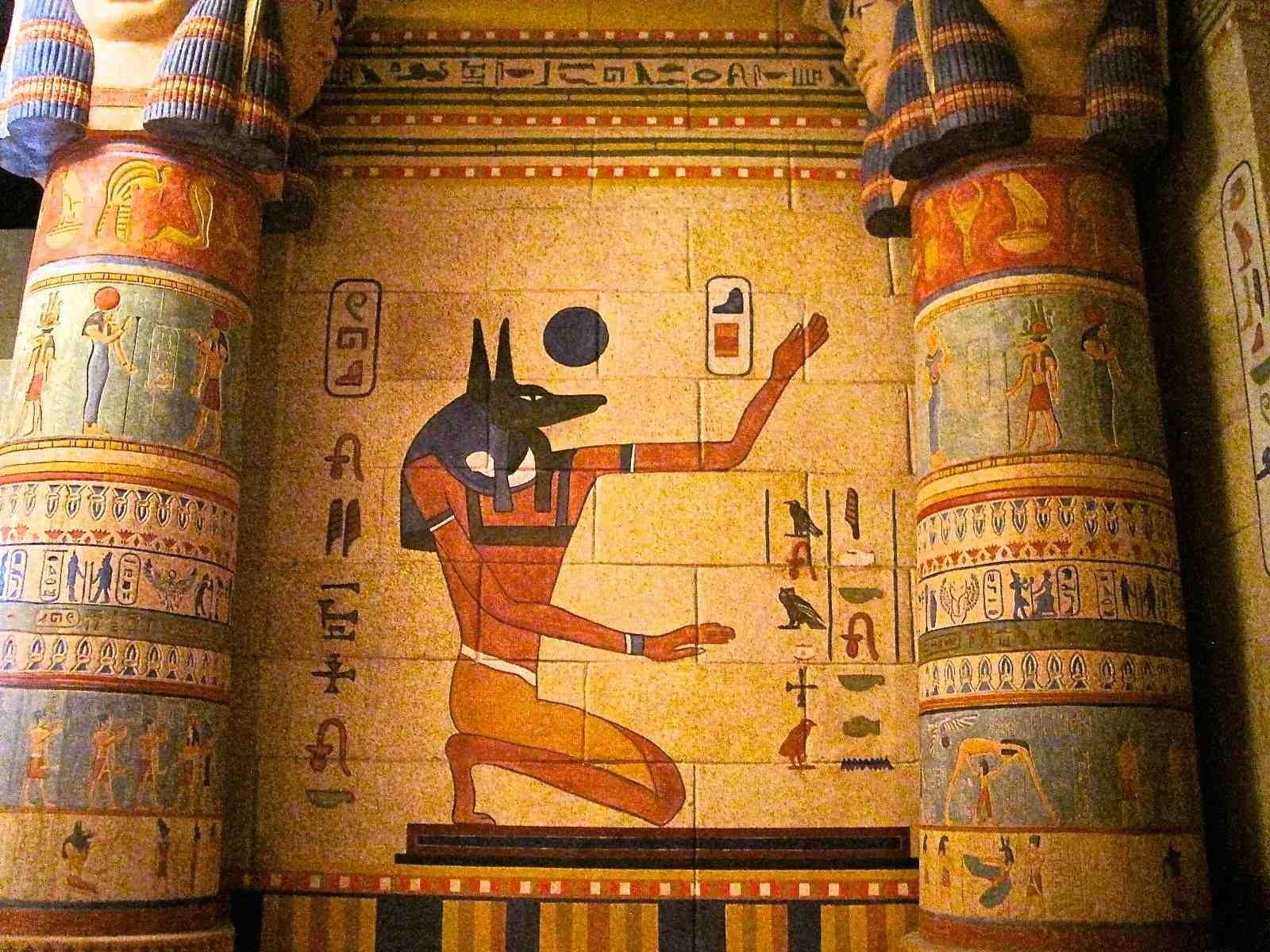
Egypt- A sophistication way ahead of its time.
Egypt brings visuals of pyramids, mummies and deserts to our mind. But there are more contemporary tilts to the age-old land.
Hieroglyphs have no vowels. What would that sound like? Any software in the market to decode it? No. We would never know how Ancient Egypt pronounced the oldest writing system in the history of human civilization. The wedding ring culture took birth in Egypt. And the west flaunts it with pride till date! The queen of Egypt, Cleopatra was not an Egyptian, she was a Greek badass. The first paper made from papyrus was invented in Egypt. It was first inked here too. Egyptians were masters in Mathematics and Science. Blindness and cancer were treated here with indigenous invented medicines. Egyptologists evince that pyramids were built by paid workers and not slaves. They were remunerated with gallons of beer (Bosses, are you listening??). Ancient Egypt men took time off from their work to care for their menstruating family members (a big shout out). And today, periods are still a taboo? Ancient pharaohs married their brother or sister to maintain the purity of blood in the lineage of the throne. Ancient Egypt gave rise to one of the oldest Christain faiths.
Egypt is a 5000-year-old vast civilization that stands amidst ancient ruins unfolding stories from the past. But still has sealed envelops of mysteries. Allow me to embark you on an interesting journey with my Top 10 Attractions in Egypt.
1. Abu Simbel Temple, Aswan, Egypt- Where the majestic king rests...
Egypt has all the wonders of mystery to offer. And when it comes to Abu Simbel Temple, the history fascinates your journey with this UNESCO World Heritage Site. The Abu Simbel complex has 2 temples. The larger one is the temple of Ramases II and the smaller one is in memory of his favourite queen Nefertari. The four statues guarding the entrance of the temple commemorate the power and magnificence of Ramses II. You will spot smaller statues near the knees and feet of the pharaohs. These are the Pharaoh’s favourite children (out of 160 from his numerous wives) and his mother Queen Tuya. Due to sand and rivers course shifts, this temple was lost to the world until 1813. Carved out of a rocky mountain on the banks of the glorious Nile river, this temple was discovered by a Swiss explorer. Buried under heaps of sand, Abu Simbel temple was open in 1817.
The narrow entrance surrounded by broad chunky walls makes your way into the temple. The roof of the first large hall is ornated with vultures symbolizing the protective goddess Nekhbet. This hall rests on 8 huge pillars fronted by Ramases II statues and walls depicting stories from past wars and the prowess of the pharaohs. The second from the left statue is partially lying on the ground. Until recently, you could take pictures of the temple. The next hall standing on 4 column vestibules has Pamases II and Nerferati sitting on their thrones along with a trine of gods of the Great Temple. An inner room shows the crowning of Neferati by Hathor and Isis.
The temple was erected in such a way that the first rays of the sun would illuminate the statues of Ramases II, Amun and Ra-Orakhtey. The fourth statue of Ptah (God of the underworld) was never to be gloomed. After the shifting of the temples, this phenomenon has changed from 21st February and 21st October to 1 day later each. Both days are significant as the latter is the birthday and the former is the coronation day of the pharaoh. To reach Abu Simbel from Aswan by road is tiring but by air is preferable and easy.
2. Karnark Temple, Luxor, Egypt- A historic illustration of timeless power…
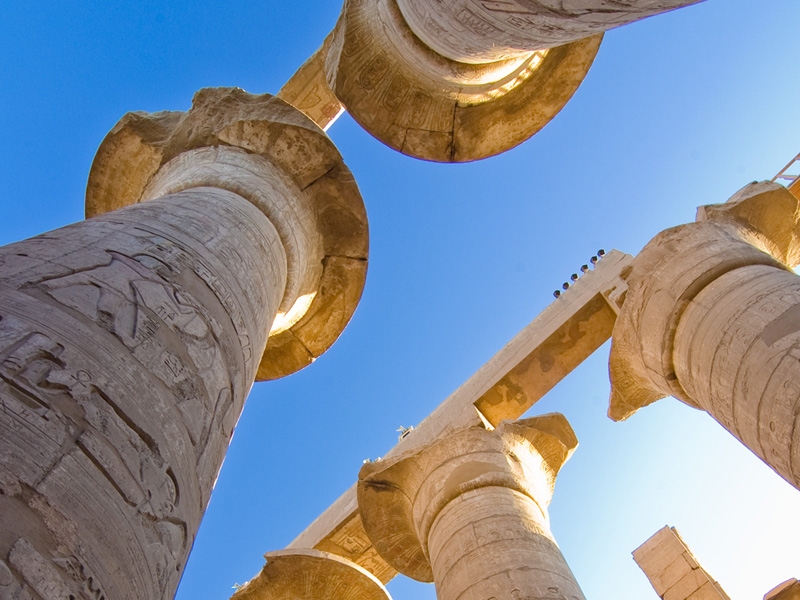
Karnark Temple is the second most visited site in Egypt. This gem of Luxor town in Egypt is a start point of most of the cruises of Nile river. The out-and-out scale of this complex fascinates the visitor about the magnificent power. Assumed to be home to sun god Amun-Re, this temple is the largest religious building ever built. Ancient Egyptian artists were hands-on at nature symbolism. The main hall supported by 134 columns mirrors palm trees, floors represents the Nile and the roof mimics an Egyptian blanket of stars.
The Amun –Re zone is the largest in the complex. Several gargantuan statuettes await to welcome you at Amun-Re. It has attractive embellishments that add glory to this structure. Towards the new complex of Amun-Re zone is the Mut zone. Standing high and powerful, Mut zone is believed to be in memory of mother goddess Mut, wife of Amun-Re. It has several temples in its laps with its own sacred lake. The Montu zone is in the north of this complex. It is dedicated to the son of Amun-Re and Mut, Montu. This zone is not open to the public.
Located on the Western Bank of Nile, Karnark Temple is one of the most magnetic attractions in this beautiful region. Popularly known as the biggest open-air museum in the world, Luxor boasts upon Karnak Temple. The sunset at Karnark Temple is breathtaking. And the night beauty has a unique ordeal to narrate. You can stay at Luxor or this attraction can be included in the Nile cruise trip too.
3. Valley of the Kings, Luxor, Egypt- The most famed collection of elaborate tombs…
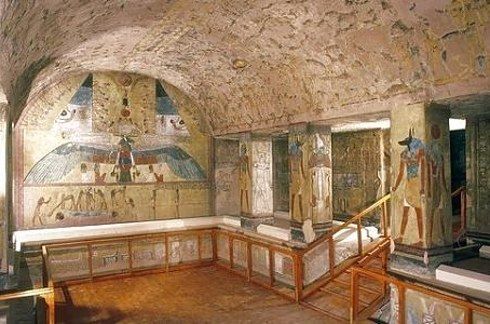
Ancient Egyptians not only built massive public structures to their pharaohs but also invested time in building hidden treasures like huge tombs. During 1539-1075 B.C., This valley became a royal burial ground. From pharaohs like Tutankhamun Seti I, Ramases II along with queens, priests, this place is the resting place of the elite. Popularly known as the Great Necropolis of Pharaohs, Valley of the Kings has 63 royal tombs. The tombs were very well-nourished with all high-end agents of mummification. From food to royal necessities required in an afterlife, Valley of the Kings is an example of royal treatment given to the elite after death.
Over the years, these tombs have suffered from the treasure hunt, floods, heat and humidity left by each visitor. Dehumidifiers are installed on the worst affected. The moment you purchase an entry ticket, you get access to only 3 tombs. Your way to the Valley of the Kings has dry and hot weather. So be prepared in advance especially if you are biking. You will come across local bazaars selling ice creams, chilled beer and water. Photography is forbidden at this site but a torch will help you with good lit visuals. Some tombs have additional entry tickets. The air-conditioned ticket booth also showcases a movie on the discovery of the Valley and restrooms. Hop on a tuf-tuf (an electrical train) that shuffles between the visitor's centre and the valley for visitors at nominal charges. To your surprise, there are many tombs waiting to be unfolded with new stories.
4. Pyramids of Giza, Giza, Egypt- The last surviving wonder of the ancient world
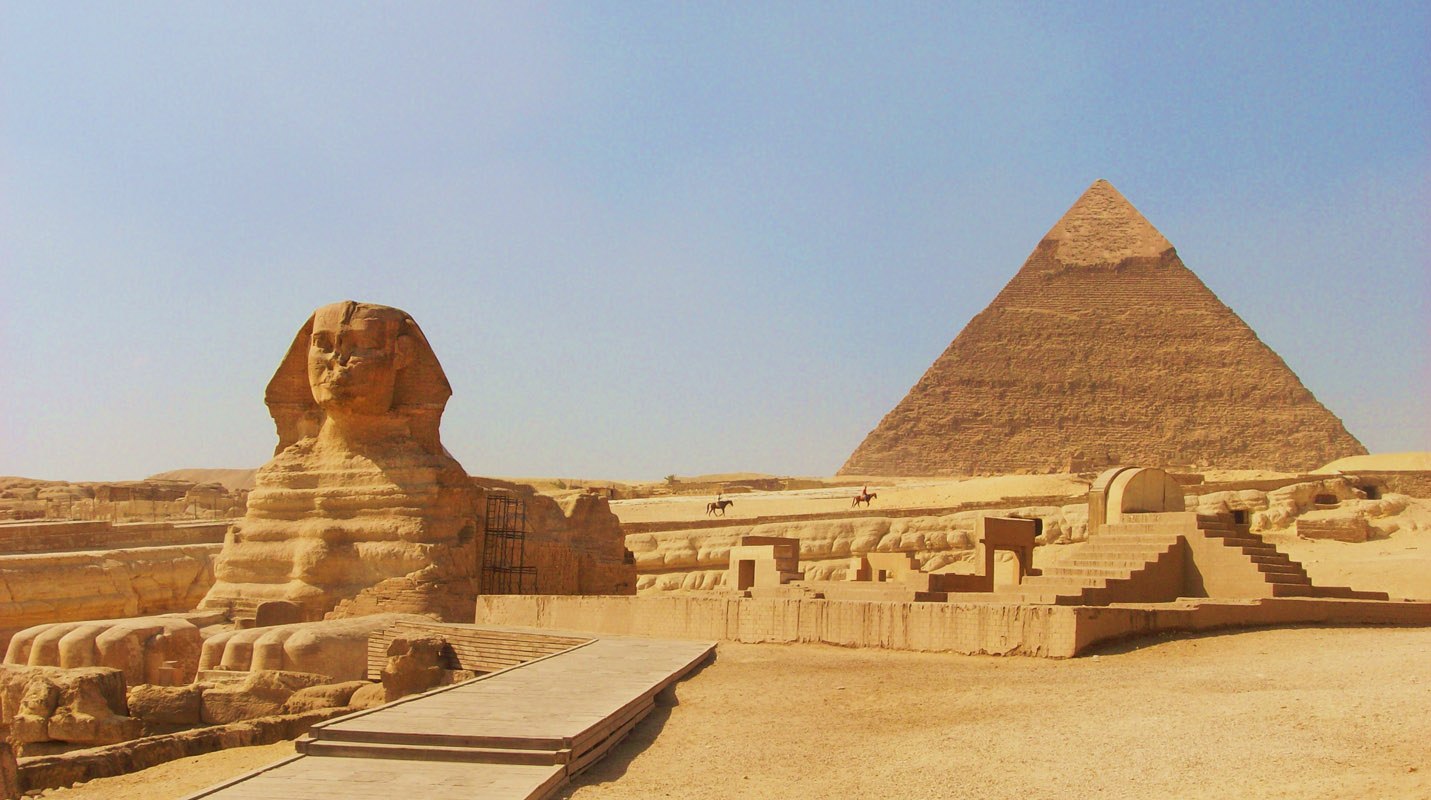
Reigning the ancient history of Egypt till date, the Pyramids of Giza showcase super ordinary shape, unmatchable geometry and plenty to be discovered. They were raised by paid workers on the orders of the pharaohs. Standing strong and powerful, Pyramids of Giza are a tribute to the contributions and achievements of ancient Egypt. The workers might be re-employed at the pyramids when the Nile overflowed to ruin their fields. Pyramidologists argue that these giant and vast structure were erected by angels or aliens as the carvings on the stones depict the same.
Neighbouring structures such as the Pyramid of Khufu, the Pyramid of Khafre and the Pyramid of Menkaure stand to magnify your experience. They are proudly guarded by The Great Sphinx. The Great Sphinx is the next most-watched monument after the pyramids. Visually simple, this finely built granite structure is shaped like a lion. It has the head of a pharaoh and a cloth on his head and snake. The Great Sphinx conveys a powerful and majestic artistic achievement. If possible and if there are visitors around, you might notice from a distance how majestic was the architecture of ancient Egypt with curious pygmies around. A stroll with the camel around pyramids will make take you to a mystery wonder.
5. White Desert National Park, Farafra, Egypt- Ivory rocks raising their heads amidst the desert
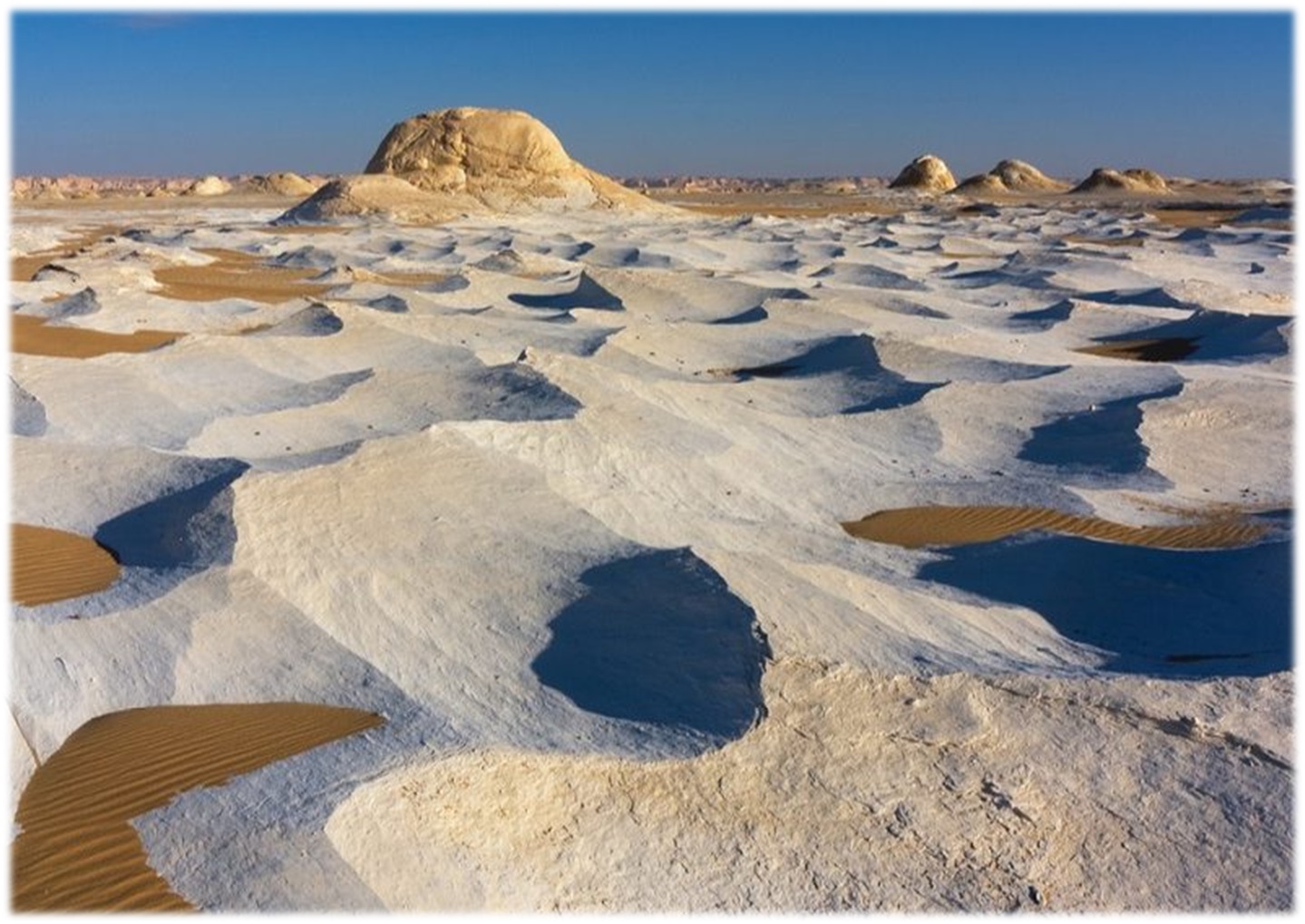
The moment you reach this desert, it feels like landing on the moon. Remarkably exquisite, these rock formations are as a result of centuries of erosion and sandstorms. These rock formations have been christened like mushrooms, icecreams, lollypops and crickets. The White Desert was a sea-bed in the past and rock formations were a result of marine life. The water dried up leaving an awe-spiring visual for us to cherish.
The charm of this desert multiplies at night, giving illusioned ecstatic views of the Arctic appearance. Sunrise and sunset are the best times of the day to enjoy this unique beauty. The sand around the white spires is rich in quartz, pyrites and fossils. The eastern part of the desert offers many reasons for camping. The western way that leads to Farfara highway gives views of huge white inselbergs sprouting into a beautiful white canyon. Twin Peaks ahead in the north of the desert are the key navigating points for travelers. The desert floor changes constantly and is ornated with quartz crystals. Along with the National Park entry fee, you will have to additionally pay for camping and the number of nights you stay. A good safari guide is highly recommended. You can combine a visit to Black Desert along with the White Desert to give you an incredible experience of geological shifts of the region.
6. The Temple of Isis, Philae, Egypt- Classical Egyptian temple with hieroglyphics…
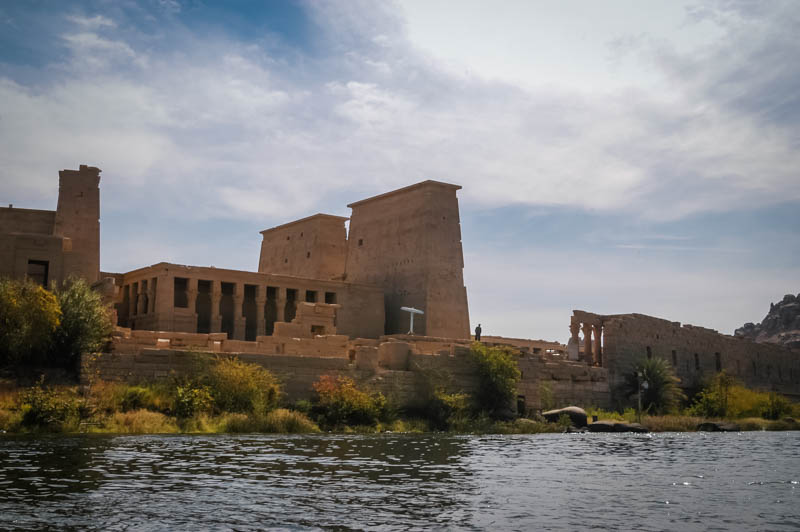
UNESCO has relocated this temple with utmost care and concern. This temple is in honour of the Goddess Isis. Temple of Isis was the last temple built to worship the goddess. To visit this temple, the cruise is the only option. The Philae island had been submerged and the UNESCO had taken the task to relocate this structure. You will not find street vendors calling you or crowds either. The boat drops you at the entrance where you find an 18m high pylon with reliefs of Plotemy XII Neos Deonysos punching enemies.
The centre of the court of the temple is the birthplace of Horus, son of Isis and Osiris. The second pylon leads to the hypostyle hall with awesome columns. You may also analyze that the temple must have been reused as a church as there are cross carvings on walls. Beyond lies a stone pedestal with the name of Plotemy III and his wife Berenice. The west exit will take you to the Gate of Hadrian where there is an image of god Hapi sitting in a cave representing the source of Nile.
The east exit will take you to Temple of Hathor ornated with reliefs of musicians and Bes, the god of childbirth. The south exit will take you to an incomplete pavilion, the most frequently painted zone by the Victorian artist. The whole complex is moved to Agilkia island from its original place at Philae due to the overflowing of Lake Nasser. You can sight the original island submerged at a short distance away punctuated with columns used in the relocating process.
You can also be a part of the Light and Sound Show at night. Though not so high-tech, it’s a good watch. A local photographer might catch you for clicking pictures for some money. Photography is restricted here.
7. Khan El-Khalili, Cairo, Egypt- Oldest open-air market in Middle-East
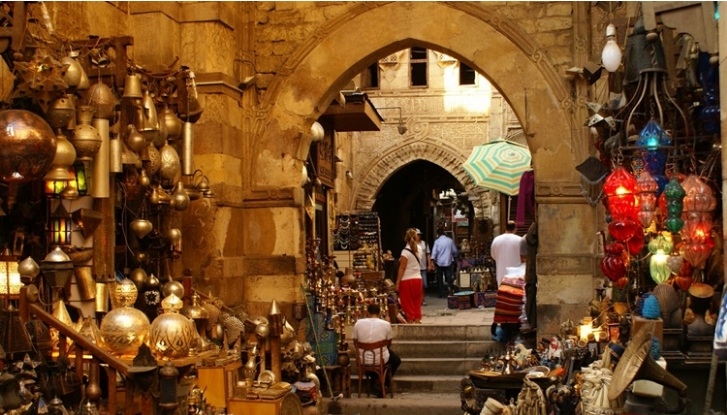
Located in the Islamic district of Cairo, Khan El- Khalili Bazaar is an ancient style mall. Snaking through the slim lanes of Cairo, this bazaar is one of the must include attractions on your trip to Egypt. Egypt is not just about pyramids and pharaohs. This cluster of shops is arranged near courtyards and stack everything from soaps to perfumes to souvenirs. Originally, Khan El- Khalili Bazaar was raised to serve as a mausoleum for the Fatimid Royal family dating back to 970 CE. Located in the heart of Cairo city, your best way to get there would be Metro and you would drop at Ataba station. From Ataba, you are just steps away.
Originally built in 1511, Khan El-Khalili Bazaar was to sell luxury items. Soon items of other grades made their appearances in this market. Khan El-Khalili has a very good quality of merchandise to offer. That is the reason this market has been surviving for so long. Khan El-Khalili is a great place to spend your entire day. Egyptians love their coffee to be strong so you will find a number of coffee shops in the market. Arabic tea in its real essence can be found and enjoyed here too. Fishawi’s Coffee Shop is a must visit as it is the oldest coffee shop in Egypt (psstt..1773). Shopkeepers are usually friendly and keep smiling to make the visitor feel welcomed. Bargaining is just another way of socializing with the locals.
The bustling market starts at 9 every morning and goes on till late evening. Fridays and Sundays mornings are rest time. If you are looking for something specific, vendors will help you to reach there as they are very cordial. Part of the market specializes only in gold and copper with smiths working around. This market is a great hub for spices and local food. Plan your visit around a carnival or cultural event. The market is fueled with energy and vibrant traditions during this time. Carry cash with you. It will be easy. To get a cab from the market, walk a little away to save money to get the right ride. Al-Hussein Mosque is just a stone’s throw away from Khan El-Khalili market which is a must visit. Belonging to the Fatimid caliphs, this mosque is one of the holiest Islamic sites in Cairo. It is believed to contain the worlds oldest manuscript of the Quran. Dress up modestly when visiting Egypt.
8. St. Catherine Monastery, South Sinai, Egypt- the Oldest functioning monastic community in the world…
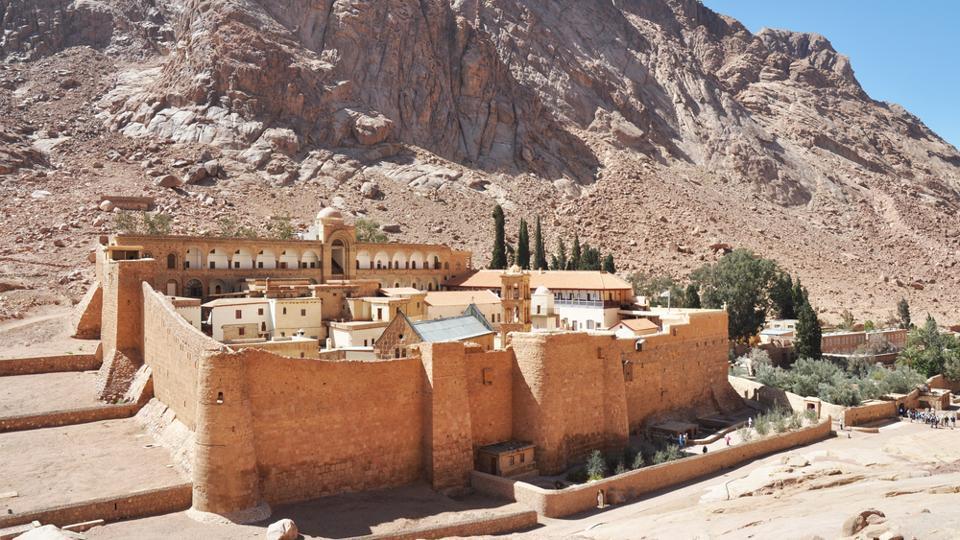
St. Catherine and its surrounding areas is a UNESCO World Heritage site. St. Catherine was a legendary martyr of Alexandria who was mercilessly beheaded for her faith. She was a virgin saint and by she was 16, she had converted many people to Christanity. Ancient facts narrate that her body was carried by angels from her torture device to Egypt’s highest peak. Close to Mt. Sinai, some monks spotted her dead body about 300 years later. It was perfectly preserved. In the 6th century, Emperor Justinian ordered to built fortress around the chapel. A basilica and a monastery were additionally built to provide a home to the rising community of the monastic.
The monastery is visited by hundreds of pilgrims who earlier use to brave their way to the monastery. But now their journey has become more convenient. You are expected to dress modestly while visiting St. Catherine. Inside St. Catherine is a 6th century Church of Transfiguration which is beautifully decorated with marbel columns and gilded icons. At the eastern end lies the remains of Catherine but not reachable by the visitors. Close to this place is a stunning piece of 6th-century, also a treasure mosaic of transfiguration. The holiest area of the monastery is the Chapel of the Burning Bush, offlimit to the visitors.
Near by is the Well of Moses, a natural spring believed to bless visitors with martial blessings when well water is consumed. Right above the well is the iconic Monastery Museum. This museum is perfectly restored to display artistic treasures of the Byzantinne’s era. You can see world famous collections of chalices, gold and silver crosses and ancient manuscripts. In the lowest room is the worlds oldest near-complete bible, Codex Sinaiticus. The Monastery Museum is the second-largest in the world with a priceless collection of illuminated bibles and ancient manuscripts. You can also spot a hand written New Testament as well.
You may also come across local vendors selling souveniers. You can find guesthouses just close to the monastery thick walls where you can relax at a café with some Egyptian coffee. Crowds steer up when tourism is on a peak season (Saturdays and Mondays). You can plan a day trip from Dahab and Sharm El-Sheikh. For an enticing diving experience, you can reach Blue Hole Diving Area and Blue Lagoon. These 2 spots are a must to give you a wonderful window of the water world of Egypt. A 2 hr drive will take you to these 2 spots for good relief from the scorching heat.
9. Colored Canyons, Sinai Peninsula, Egypt- A whirlpool of breathtaking visuals
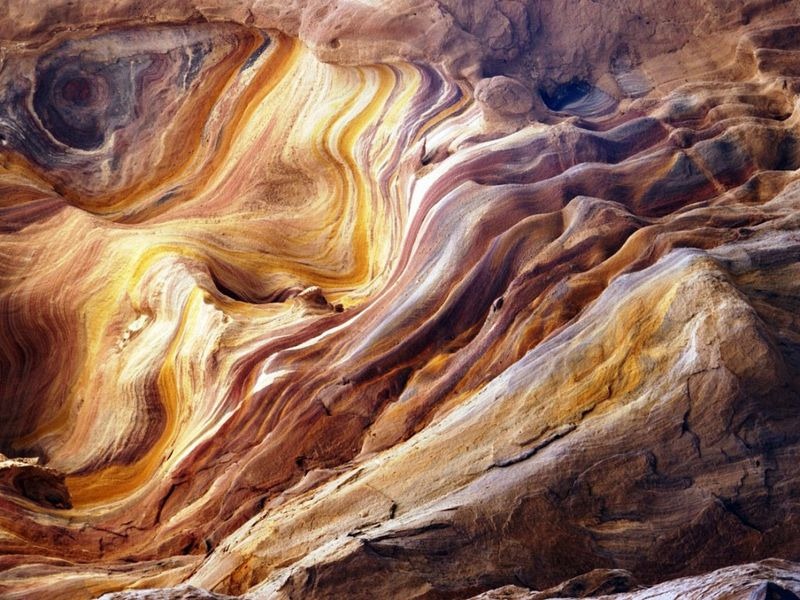
About 90 km from St. Catherine Monastery lies the geological wonders site. It offers you a scenic hiking adventure you will remember for a lifetime. You may combine your visit to the Colored Canyons along with your visit to the monastery. You can find and enjoy beautiful geological formations displaying incredible shades of black, green and yellow. You will make your way through narrow passes and walkthroughs and even a walk through the ‘Rock’.
You have a lot of camping option here too amidst the hues of a rainbow. After a hike of about 800 m, one can drop at eco-lodges on the top of the mountain to enjoy Bedouin food under the blanket of stars. The nearest town to the Colored Canyons in Nuweiba. The rocky walls of the canyon are formed by sandstone, limestone and granite. Easily reachable by car, your stop and stay at the Colored Canyon will be one of the most incredible stays of your lifetime.
10. Bibliotheca Alexandrina, Alexandria, Egypt- An ultra-modern architecture in the city of historic realms…

Believe it or not! It is one of the greatest classical institutions in the heart of the historic city, Alexandria. Biblotheca houses a number of museums. It even hosts major cultural events and is even a centre for learning and culture. Opening its eyes in 2002, Bibliotheca Alexandrina is a true example of the amalgamation of modern architecture and ancient studies. The shape of this centre is a hugely angled discuss embedded in the ground. The exterior granite walls are encrypted with hieroglyphs, pictograms and symbols from more than 100 different human scripts. The main reading room can accommodate around 2500 readers.
In adition to the impressive reading room, there are 4 specialised libraries- Childrens’ library aged 6-11, a Youth library aged 11-17, a multimedia library and a library for the blind. There are 4 permanent museums, a conference hall, an exhibition hall and a full schedule of events. The Antiquites Museum holds the artefacts finely picked from the sites across Egypt. From Roman to Greek to Byzantine to pharaohs- a fine collection of all these eras breathe here. Next, you head to the Manuscript Museum where an attractive display of ancient texts and antiquarian books sit proudly. Right next is the incredible Impressions of Alexandria Exhibition which documents the city’s long history through maps and drawings.
Bibliotheca’s exhibition hall is altogether another wonder to explore here as it showcases contemporary Arabic art, heritage collection of folk-art, textiles and Arabic science equipment of the medieval period. The World of Shadi Abdel Salam is a treat for filmmakers as it displays beautiful drawings of film sets. The afternoon is a good time to watch films on Alexandria called Culturama. It is showcased on 9 screens. The Planetarium is a futuristic neon lit museum showcasing the contribuition of science of 3 key historic era- Pharaonic Egypt, Hellinistic Alexandria and Islamic era. This museum is all focused on educating children. The library has a wide range of toddler activities to keep your little ones busy. Tours run every 45 min in English between 11:45 am to 4:30 pm, Sunday to Thursday. On Saturdays it is scheduled from 12:10pm to 3:00pm. Children under 6 are not admitted to the library room. Day care facilities are available during opening hours.
I know by now, your curiosity level is pricking you to bag pack and head to the maze of enigmatic history- Egypt.
Cheers!!
*Note: All travelers are advised to keep yourself updated about travel warnings on your country’s government website. While traveling, be alert in order to avoid hassles. All tourist spots in Egypt are very well secured by the local police. The local police are very professional when it comes to safe evacuations in case of emergency if any.
